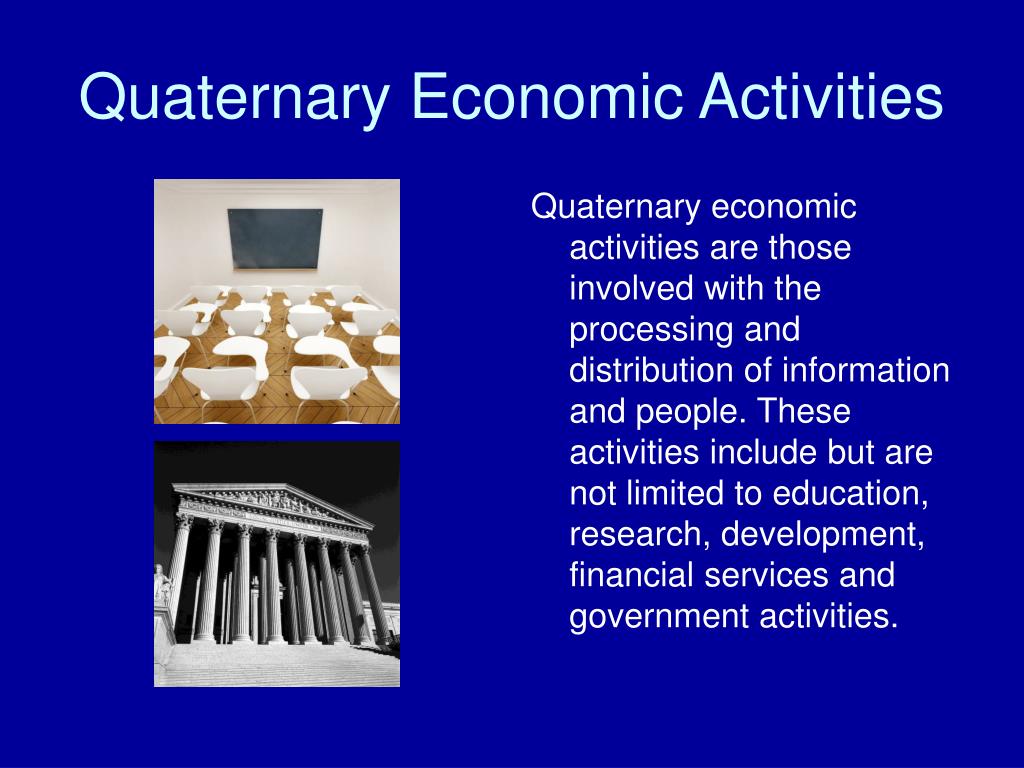

In addition to this, in recent years many economists have argued that the theory should be extended to include a quaternary sector. In a NutshellĪccording to classical economic theory, all economic activity can be classified into one of three sectors: the primary sector, the secondary sector, and the tertiary sector. Although this idea has become increasingly popular in recent years, the definition and scope of a quaternary sector are not clearly defined just yet, which results in a number of different approaches that each focus on a different set of industries. Thus, examples of quaternary sector industries include research and development, education, information technology, consulting, etc. Many economists argue that knowledge-based industries are distinct enough from classical service industries to warrant a separate sector. This sector has emerged a few years ago as a further distinction of the tertiary sector. The quaternary sector includes all industries that are concerned with the creation and distribution of knowledge. Thus, in modern economies, the tertiary sector employs about 70% of the workforce. As a result, an increasing number of industries shift their focus towards the tertiary sector. As economies develop, more processes can be industrialized and automated. However, many of the service industries still rely on goods produced in the primary and secondary sectors to offer their services. Unlike the two preceding sectors, the tertiary sector focuses on interactions between people rather than the production of goods. Examples of tertiary sector industries include retail, health care, financial services, entertainment, and many others. It is sometimes also referred to as the service sector or service industries. The tertiary sector describes all industries that provide services to other businesses or final consumers.

In modern economies, it still employs about 20% of the workforce.

Nevertheless, the secondary sector is usually the strongest sector in transitional economies. Many of the industries associated with the secondary sector require heavy machinery, consume large quantities of energy and produce a lot of waste (see also: negative externalities) during the production or construction process. output) from the primary sector and process it to the point where the resulting products can be used by other companies for further production or by consumers as finished goods. Both heavy and light industries use the raw material (i.e. On the other hand, light industries include the manufacturing of food, beverages, cosmetics, clothes, home electronics, etc. Examples of heavy industry include steelmaking, mining, construction as well as the production of chemicals, automotive, aircraft, and so on. It is often divided further into heavy industy and light industry. The secondary sector includes all industries that are concerned with the manufacturing of usable products or finished goods. As a result, in most modern economies the primary sector only makes up about 10% of total employment.

In other words, employment numbers in this sector tend to decrease, as economies develop. However, in more advanced economies, heavy machinery can be used to significantly increase efficiency and reduce the number of workers needed in primary sector industries. Therefore, in traditional economies, it is usually the strongest sector in terms of employment. The primary sector is the most basic sector because in its simplest form it does not require a lot of advanced machinery. This includes industries such as forestry, mining, agriculture, or fishing. The primary sector describes all industries that are engaged in the extraction of natural resources or the production of raw materials.


 0 kommentar(er)
0 kommentar(er)
